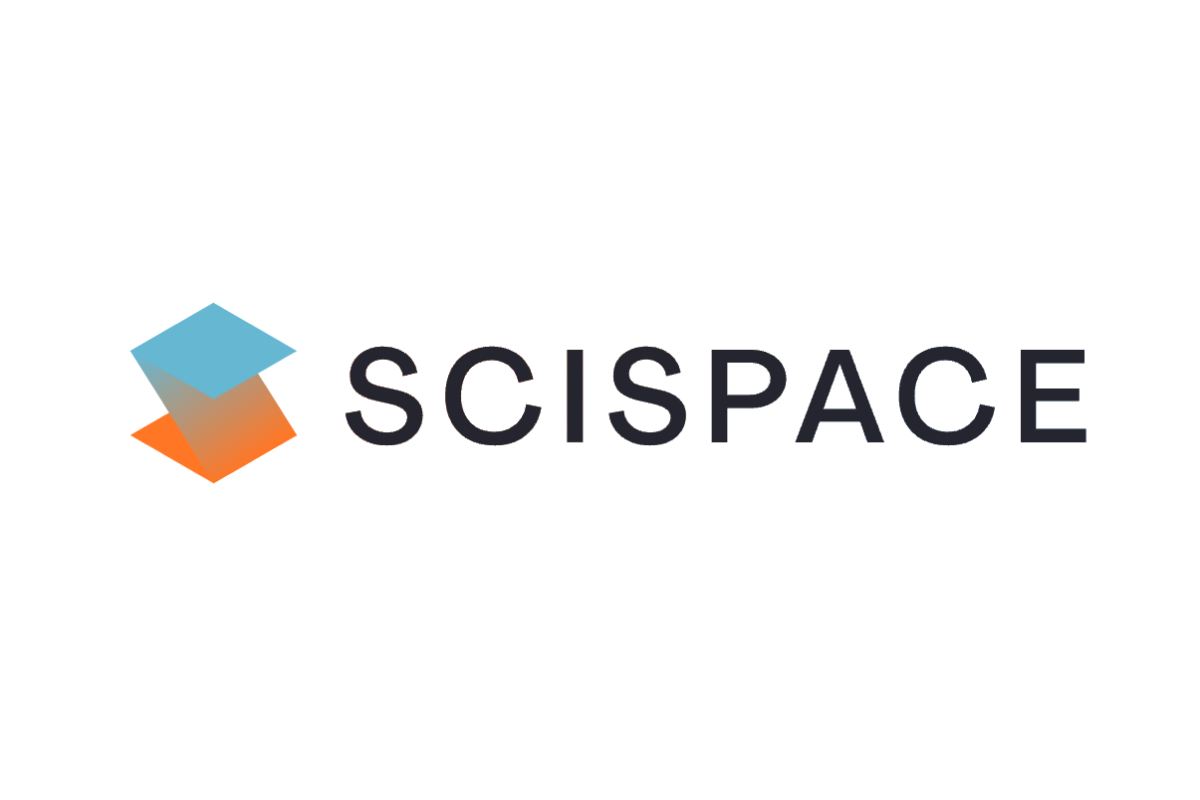Key Takeaways
What is Scispace? Scispace is an AI-powered research platform that helps academics, students, and researchers manage, write, and publish their work more efficiently by streamlining literature reviews, simplifying paper analysis, and enhancing citation management.
- 🔍 Access to 200+ million research papers enables comprehensive literature searches with AI-powered capabilities
- 💬 Chat with PDF feature delivers precise, citation-backed answers from papers, reducing reading time significantly
- ✍️ AI Writer and paraphrasing tools help overcome writer’s block with 20+ preset academic writing tones
- 📚 “Agentic approach” Deep Review produces 10x more relevant research results 2-3x faster than similar tools
- 📝 Citation generator supporting 9,000+ styles with limitations for free users
- ❌ No Microsoft Word integration, causing formatting issues when transferring content
- 🔄 Performance degradation with larger documents, potentially creating reference errors
- 🧠 Particularly valuable for literature reviews and research paper analysis
This review covers: features, integrations, customization, hosting, pricing, pros and cons, and real-world use cases.
What is Scispace?
Scispace is an AI-powered platform that helps academics manage, write, and publish their work more efficiently. The platform’s AI research assistant simplifies literature search and review processes by helping users find relevant research papers and extract key insights from PDFs.
Use Cases
For Students and Early-Stage Researchers
- 🎓 Research Initiation: Beginning researchers use Scispace to quickly understand new research areas by getting AI-generated summaries and explanations of complex concepts
- 📄 Paper Analysis: Students upload course readings to Chat with PDF to ask specific questions and generate concise explanations of difficult concepts
- 📝 Thesis Development: Graduate students employ the AI Writer and paraphrasing tools to overcome writer’s block and maintain academic writing standards
- 📚 Citation Management: Students generate properly formatted citations in their required style without manual formatting errors
For Experienced Academics and Research Professionals
- 🔎 Comprehensive Literature Reviews: Researchers utilize Deep Review to conduct systematic literature reviews across their field, finding relevant papers 10x more efficiently
- 📊 Data Extraction: Researchers extract specific data points from multiple studies to create comparison tables for meta-analysis
- 🎥 Research Communication: Academics convert complex papers into video abstracts to increase visibility and citation potential
- ✍️ Draft Preparation: Research teams use the AI writing tools to collaboratively draft manuscripts with consistent citation formatting
For Teaching and Supervision
- 📚 Course Material Development: Instructors use Scispace to gather and synthesize research for course development
- 👨🏫 Student Guidance: Supervisors recommend Scispace for helping students navigate complex research literature
- 🔍 Plagiarism Prevention: Faculty utilize the AI detector to identify potentially AI-generated content in student submissions
Content Coverage
📚 Database Size and Scope Scispace provides access to an extensive database of over 200 million research papers across multiple academic disciplines, forming the foundation for its literature review capabilities.
🔍 Search Refinement Users can filter results based on criteria such as PDF availability and journal ranking, helping narrow down the most relevant sources for specific research needs.
⚠️ Discipline Coverage Limitations While Scispace covers multiple disciplines, the research materials don’t specify whether certain fields have stronger coverage than others, focusing primarily on peer-reviewed academic papers.
Search and Discovery Capabilities
🧠 How does semantic search work? Scispace’s search extends beyond keywords with semantic capabilities, presenting research results in a clear, tabular format with source citations.
🔎 What makes Deep Review unique? Deep Review employs an “agentic approach” with iterative refinement processes: refining queries, shortlisting papers, and delivering highly relevant results 2-3 times faster than competing tools.
💡 How does Find Topics enhance discovery? This feature allows users to ask specific questions and receive answers sourced from 285 million research papers with complete citations, quickly identifying the most pertinent information.
⏱️ Time-saving impact? These search capabilities automate the initial discovery phase, allowing researchers to focus on analyzing and synthesizing information rather than hunting for relevant sources.
Reader Experience
💬 How does Chat with PDF transform reading? Users can upload papers and ask specific questions, receiving precise answers sourced directly from the document with citations to relevant sections.
🔍 What happens when text is highlighted? Users can highlight text to generate explanations, summaries, or recommendations for related research, with built-in note-taking functionality.
📊 How are multiple documents compared? The Extract Data feature enables comparison of several PDFs by presenting extracted data in tabular format, making it easier to identify patterns across studies.
⚠️ What are the export limitations? While the reading experience within Scispace is robust, transferring content to other formats—particularly Microsoft Word—may result in distorted equations and references.
AI Assistance and Summarization
✍️ How does the AI Writer help researchers? The AI Writer suggests text completions as users write while integrating with the research database to offer relevant citation suggestions and automatically updating reference lists in real-time.
🔄 What makes the paraphrasing tool distinctive? With over 20 preset tones, the paraphrasing tool allows researchers to customize output by adjusting length and variation while maintaining academic standards—surpassing competitors offering fewer options.
📝 How does AI handle complex content? The AI delivers real-time explanations for text, mathematical equations, and tables, generating insights with citations and identifying research gaps.
🔍 What does the AI detector offer? It helps maintain academic integrity by identifying AI-generated text with detailed reports at both document and sentence levels.
⚠️ Limitations to be aware of? Users should maintain critical evaluation of AI-generated content, as there may occasionally be oversimplifications with highly technical material.
Integration and Export Options
🔗 How can users access Scispace? The platform is available through a web interface, Chrome extension, and as a GPT plug-in, providing flexible access options.
⚠️ What’s the biggest integration limitation? Scispace lacks Microsoft Word integration, resulting in distorted equations and incorrect references when transferring content—a significant issue for academic writing.
📚 How extensive is citation support? Users can generate citations in over 9,000 styles with export options as BibTeX or clipboard copying, though free users face limitations on citation numbers.
🎬 What unique export options exist? The PDF to Video feature allows for exporting research as video abstracts shareable on social media, potentially increasing research visibility.
🔄 Impact on workflow? The lack of seamless integration with common academic writing tools creates friction points, requiring researchers to combine Scispace with other tools for complete document preparation.
Collaboration Features
📚 How does Scispace support content organization? Users can save papers to a personal library for organization and potential sharing of research materials.
🎥 What content sharing options exist? The PDF to Video feature enables researchers to create shareable video abstracts to increase visibility and potentially boost citation rates.
📊 How does data extraction facilitate collaboration? Extracting specific data points from PDFs into tabular format makes sharing structured insights with team members easier.
💬 What are the collaboration limitations? There’s limited information about shared workspaces, real-time collaborative editing, permissions structures, or comment systems.
👥 Who is best served by current collaboration features? Researchers whose primary collaboration needs center around sharing insights rather than collaborative document editing may find Scispace’s current features sufficient.
Accessibility and Device Support
💻 How is Scispace accessed? It’s primarily a web-based platform accessible across devices with internet browsers, with additional functionality through a Chrome extension and as a GPT plug-in.
📱 What about mobile support? Limited information is available about mobile-specific applications or interfaces, with the platform appearing designed primarily for desktop use.
♿ What accessibility information is available? The research materials provide no specific information about compliance with accessibility guidelines like WCAG, creating an information gap for users with specific requirements.
🔍 How might AI features impact accessibility? Features like Chat with PDF and summarization could potentially enhance accessibility by making dense academic content more digestible, though specific screen reader compatibility information is unavailable.
Cost and Pricing Structure
💰 What pricing model does Scispace use? Scispace offers a freemium model with both free and paid options, with subscriptions starting at $20 monthly or $240 annually.
⚠️ What are the free tier limitations? The free version constrains citation generation and limits high-quality interactions with Chat with PDF, while competing platforms like Paperpal reportedly offer unlimited citation generation in their free version.
🔍 Are there special pricing options? Deep Review is priced separately at $70 monthly, with educational institutions receiving a discounted rate of $65 per user.
💸 Any ways to reduce costs? Promotional discounts are available through affiliate codes, suggesting price-sensitive users may access premium features at reduced rates.
Privacy and Data Security
⚠️ What privacy information is available? The research materials offer limited specific information about Scispace’s privacy practices and data security measures, creating a significant information gap.
🔒 What certifications are mentioned? No information is provided about compliance with standards like GDPR or academic/institutional security certifications.
❓ What key privacy questions remain unanswered? The research doesn’t specify how uploaded documents are stored, whether query data is retained, if content trains AI models, or what control users have over their data.
🔍 What should privacy-conscious users consider? Given the AI-powered nature of the platform, users might need clarification about the confidentiality of research questions, particularly for unpublished or competitive research areas.
Customer Support and Help Resources
📊 How responsive is customer support? According to Trustpilot reviews, Scispace responds to 100% of negative reviews, typically within one month, though some users report delayed responses as a concern.
📚 What help resources are available? The research materials don’t detail user guides, documentation, or tutorial resources, potentially creating a steeper learning curve for new users.
💬 How does Scispace engage with user feedback? The platform maintains active engagement with feedback based on its Trustpilot profile, with a 4.5-star rating from 85 reviews.
⚠️ What support concerns exist? Potential delays in support responses might impact time-sensitive research projects, with no specific mention of real-time support channels like chat or phone.
Summary
- 🔑 Scispace significantly accelerates academic research through AI-powered content discovery and analysis tools
- ⚙️ The platform excels at literature reviews, with its Deep Review feature finding more relevant papers in less time
- 💡 Chat with PDF transforms how researchers extract information from papers, enabling targeted questioning instead of complete reading
- ✅ AI writing and paraphrasing tools with academic-specific features provide substantial advantages over generic writing assistants
- ❌ Integration limitations, especially with Microsoft Word, create friction points in academic workflows
- ✅ Extensive database of 200M+ research papers provides comprehensive literature review coverage
- ✅ Deep Review’s agentic approach finds more relevant papers faster than competitors
- ✅ Chat with PDF delivers precise, citation-backed answers, saving reading time
- ✅ AI Writer helps overcome writer’s block with automatic text suggestions and citation integration
- ✅ Paraphraser offers 20+ preset tones, exceeding options in competing tools
- ✅ Citation generator supports over 9,000 styles for diverse academic publishing
- ✅ PDF to Video feature creates shareable video abstracts to increase research visibility
- ❌ Lacks Microsoft Word integration, causing formatting issues when transferring content
- ❌ Free version has significant limitations for citation generation and advanced AI features
- ❌ Table editing tools have limited functionality for large datasets
- ❌ Performance degrades with larger documents, creating technical issues
- ❌ Some users report delayed customer service responses
- ❌ AI detector may incorrectly flag original content as AI-written
- ❌ Limited information available about privacy practices and data security
Frequently Asked Questions
How accurate is Scispace’s literature search compared to traditional methods like Google Scholar?
Scispace uses semantic search and an agentic approach beyond traditional keyword matching. While Google Scholar relies primarily on keywords and citation metrics, Scispace’s Deep Review employs iterative refinement to find relevant papers. According to Scispace’s internal study, their system identifies more relevant papers than competitors. However, for comprehensive research, some users still combine Scispace with traditional search methods to ensure complete coverage of available literature.
Can Scispace handle papers with complex mathematical equations and technical content?
Scispace can process papers containing mathematical equations and technical content, and its AI can provide explanations for these elements. However, some limitations exist. When exporting content to Word documents, equations may become distorted. Additionally, while the AI attempts to preserve technical terms in academic text, it may occasionally suggest unnecessary changes for highly specialized content, requiring user verification of AI-generated explanations.
How does the Chat with PDF feature work, and what are its limitations?
Chat with PDF allows users to upload documents and ask specific questions, receiving answers sourced directly from the text with citations. The feature works by analyzing the document content and generating responses based on relevant sections. Free users face limitations on the number of high-quality interactions available, while premium users get unlimited access. The quality of responses depends on the clarity of questions and the content of the uploaded document. Some highly technical or specialized content might result in oversimplified explanations.
What citation styles does Scispace support, and are there limits for free users?
Scispace supports over 9,000 citation styles, including common formats like APA, MLA, Chicago, and IEEE. Free users face restrictions on the number of citations they can generate, though the exact limit isn’t specified in the research materials. Premium subscribers receive unlimited citation generation. The citation output can be exported as BibTeX or copied to the clipboard for use in other applications.
How does Scispace’s AI detector determine if content is AI-generated?
Scispace’s AI detector analyzes text patterns, linguistic structures, and statistical properties to identify potential AI-generated content. It provides a comprehensive report at both the document and sentence level, highlighting portions likely created using AI tools. However, the system isn’t perfect—some users report that it occasionally flags original human-written content as AI-generated. For academic submissions, users should view the detector as one tool in a broader verification process rather than a definitive assessment.
Can Scispace integrate with reference management software like Zotero or Mendeley?
The research materials don’t specifically mention direct integrations with reference management software like Zotero or Mendeley. While Scispace allows exporting citations in BibTeX format, which can be imported into these tools, there doesn’t appear to be seamless one-click integration. Users would likely need to export citations from Scispace and then manually import them into their preferred reference manager. This represents a potential workflow limitation for researchers who rely heavily on these specialized reference management tools.
What types of documents can be uploaded to Scispace for analysis?
Scispace primarily works with PDF documents for its Chat with PDF and Extract Data features. The platform allows users to upload their own PDFs and interact with them through questions or extract specific data points. While the research materials don’t specify all supported file types, the focus appears to be on PDF format, which is standard for academic papers. There’s no explicit mention of support for other academic file formats like LaTeX or Word documents for direct analysis, though the platform can assist with writing content that might ultimately be used in these formats.
Ready to try Scispace? Visit the official site



